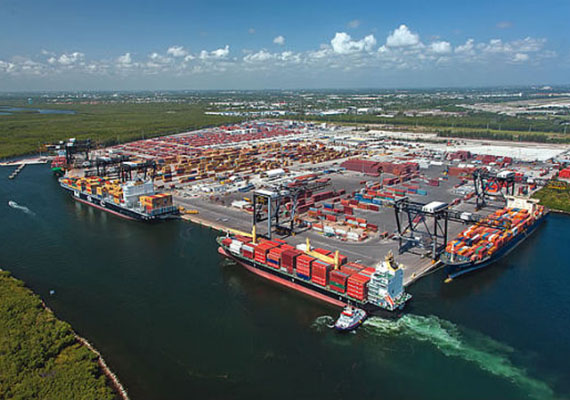Trending
Port Everglades wins approval for $437M expansion project
Project will nearly triple port's existing deepwater turn-around area

The Broward County Commission unanimously approved one of the most expensive expansion projects in Port Everglade’s history.
The port, which acts as a gateway to Latin America, the Caribbean, Europe and Asia, will now begin the $437.5 million project that will nearly triple its existing deepwater turn-around area, and install crane rail infrastructure for new Super Post-Panamax cranes.
The Southport Turning Notch Expansion (STNE) project will add 1,500-feet to the port’s turn-around area, which will allow for five new cargo berths and space for larger cargo ships, according to a press release.
The two-part expansion project also includes the Southport Crane Infrastructure Improvements project. In June, the port will ask the commission to approve a separate agreement to purchase three new Super Post-Panamax container cranes, expected to be delivered in 2019, with an option to purchase up to three additional cranes.
Moss/Kiewit, a joint venture of Moss & Associates and Kiewit Infrastructure South Co. has signed on as the managing general contractor.
Environmentalists have drawn issue with the environmental impact of port expansion projects in the past, due to existing ecosystems along the entrance channel to Port Everglades.
According to the release, port officials have worked closely with the Florida Department of Environmental Protection to replace 8.7 acres of an existing mangrove conservation easement with 70,000 new mangroves and wetland plants. The STNE project will also include a number of environmental improvements in West Lake Park, the release says.
A nearby 11-story parking garage with about 645 spaces and 1,400 square feet of commercial space on it ground floor, was approved by the Hollywood Planning and Development Board to serve travelers taking cruises and flights, in July.
Last year, the port handled more than 1 million 20-foot cargo container units, and does not rely on local tax dollars to operate. — Amanda Rabines




